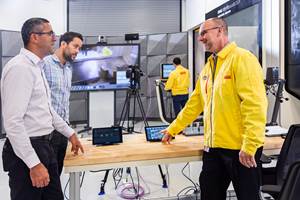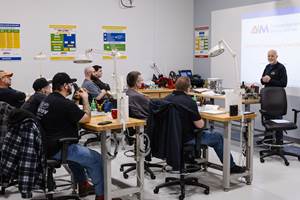The Plastics ISO 9000 Model 3 - Moldmakers' and Molders' Existing Procedures Are 80 Percent to ISO 9001 Global Standard
Cost containment and operating efficiencies are becoming more important factors in meeting increased price competition if a moldmaker is to remain profitable.
As the U.S. plastics industry matures, competition for market share increases. Moldmakers and molders face a buyer's market, where quality, price and speedy delivery are major customer concerns. Therefore, cost containment and operating efficiencies become more important factors in meeting increased price competition if a moldmaker/molder is to remain profitable.
The ISO 9000 family of quality management system standards is being updated to reflect a more sector/industry-specific understanding of quality. Today, an increasing interest in these quality standards by the supply-chain has created the need to revise ISO 9000 to ensure that the needs of users around the world are met. ISO 9001:2000 represents the first major revision to the quality standards since its initial issue. The Plastics ISO 9000 Model (see Figure 1) serving all markets is the perfect companion to the new standard and will help clarify the changes in presentation, terminology, format and requirements to quality professionals in the plastics molding industry.
Many companies have discovered that to achieve a higher level of performance excellence, employees and management must first have a command of the quality principles. A program to help guide, presents and defines the new ISO 9001:2000 standard and the common methods used to achieve quality, in easy-to-understand words. Teach company-wide employees the eight basic principles of ISO 9001:2000 (see Figure 2) and improve your organization's quality management system. A company's production operator, toolmaker and maintenance personnel are often in the best position to notice practices or conditions that do not comply with a quality management system standard.
Training your front-line workers in the basic principles of any quality management system standard has never been easier than with ISO 9001:2000. Featuring the basic principles of the new ISO 9001:2000 standard and the provisions for the QS-9000 standard, the Plastics ISO 9000 Model enables you to teach your front-line workers with interactive training tools such as short case studies and exercises. Empower your front-line workers in the application of these quality management system standards and improve their everyday work.
Everyone thinks ISO 9001 is a separate function. What it needs to be is something integral to the way moldmakers and molders already do their work. It needs to be a part of a moldmaker/molder's business plan, operational plan, and sales and marketing plan. When it is, the biggest problem shops face is their own employees' inability to change as rapidly as the business environment of their facility. Senior managers must take all existing forms, company-wide from all departments, and add business improvements, written instructions and procedures to them. Since most moldmakers and molders already have in place a somewhat scattered informal report card system, a much more formal performance metrics system is necessary for meeting ISO auditing requirements.
Surveys to date on small, medium and large plastics suppliers indicate that they are conducting business as usual with 80 percent procedures in place. The remaining 20 percent of the procedures for ISO 9001:2000 contains good business practices and is based on sound quality management principles and procedures.
The last 12 years of experience with ISO 9001 demonstrate that the standard does provide a useful model for most organizations - one that has positively contributed to meeting plastics-related organizational objectives. The primary concern of the plastics industry is to address the requirements and needs of these users, with a goal of creating a standard that can add value, lower costs and achieve customer satisfaction.
Related Content
How to Use Continuing Education to Remain Competitive in Moldmaking
Continued training helps moldmakers make tooling decisions and properly use the latest cutting tool to efficiently machine high-quality molds.
Read MoreMold Maintenance Continues to Matter: Enhanced Training Program in a New Facility
I attended a MoldTrax mold maintenance workshop in 2019 and shared my experiences, and despite changes in ownership, the workshop's remarkable value endures, as discussed in a recent Q&A with the current leadership.
Read MoreThe Role of Social Media in Manufacturing
Charles Daniels CFO of Wepco Plastics shares insights on the role of social media in manufacturing, how to improve the “business” side of a small mold shop and continually developing culture.
Read MoreHow to Foster Innovation Through a Culture of Education, Mentoring
Dynamic Tool Corp. shares its strategy for building a team with the right attitude and aptitude to deliver innovation that meets customer expectations.
Read MoreRead Next
How to Use Strategic Planning Tools, Data to Manage the Human Side of Business
Q&A with Marion Wells, MMT EAB member and founder of Human Asset Management.
Read MoreAre You a Moldmaker Considering 3D Printing? Consider the 3D Printing Workshop at NPE2024
Presentations will cover 3D printing for mold tooling, material innovation, product development, bridge production and full-scale, high-volume additive manufacturing.
Read More























